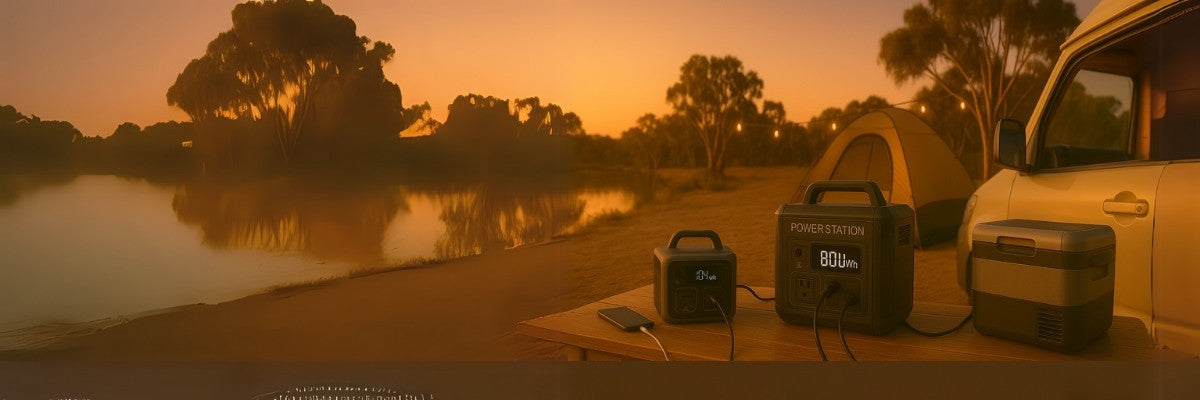
How Many Watts for Portable Power Station?
Wondering how much power it takes to keep your essentials running off-grid? Whether you’re charging your phone or powering a microwave in your van, choosing the right portable power station starts with one key question: how many watts do you actually need? Let’s break it down—no tech degree required.
Not sure which power station is right for you?
Take the quiz!
Understanding Portable Power Station Output and Capacity
Watts vs. Watt-Hours: What's the Difference?
Watts: Instantaneous Power Output
Watts (W) show how much power a device needs at any given moment. Think of it like speed—how fast your power station needs to work. A 60W laptop, for instance, draws 60 watts while it’s running.
Watt-hours: Total Energy Capacity
Watt-hours (Wh), on the other hand, reflect the total energy available. It’s like your fuel tank. A 500Wh lithium-ion power station can run a 50W fan for about 10 hours—depending on temperature, battery age, and efficiency.
How Many Watts for Portable Power Station Lithium Ion?
For lithium-ion models, power output varies widely. Entry-level models deliver around 200–300W, while high-capacity units can exceed 2000W. Always check the continuous and peak wattage to ensure it matches your devices. Lithium-ion batteries provide excellent energy density and are perfect for compact, reliable use on the go.
Using a Portable Power Station Calculator
How Many Watts for Portable Power Station Calculator?
Use a portable power station calculator to estimate your energy needs. Start by listing each device, its wattage, and expected usage time. Multiply wattage by hours to get Wh (watt-hours). Then total everything and add 10–20% as a buffer to avoid maxing out your power station.
Matching Wattage to Your Gear
Low-Wattage Devices (Phones, Laptops, LED Lights)
These essentials are easy to power. Phones use 5–20W, LED lights 5–15W, and laptops 30–60W. A 300W power station with 250Wh capacity easily handles daily tasks and short trips.
Medium-Wattage Devices (Fans, TVs, Kitchen Appliances)
Appliances like TVs (80–120W), fans (20–50W), and kettles or coffee makers (100–300W) fall in this range. Choose a station with 500–600W continuous output and 500–1000Wh capacity.
High-Wattage Gear (Microwaves, Hair Dryers, Power Tools)
Devices drawing 800W to 1800W—like microwaves, drills, or hair dryers—require power stations with at least 1000W continuous output and surge protection for startup spikes.

Portable Power Station Wattage Guidelines by Use Case
Light Use: Device Charging & Emergency Kits
Go for 150–300W stations with 250–500Wh storage. These are perfect for charging phones, radios, LED lights, and laptops in short bursts.
Moderate Use: Camping & Remote Work
A 300–600W power station paired with 500–1000Wh capacity can handle laptops, portable fridges, lights, and router/modem combos for a weekend away.
Heavy Use: Van Life & Home Backup
When you need to run CPAP machines, induction cooktops, or large power tools, look for stations with 1000–2000W output and 1000–2000Wh storage. Lithium-ion units are particularly ideal due to their lighter weight and recharge cycles.

Conclusion: Choosing the Right Portable Power Station for Any Situation
Choosing the right portable power station is all about understanding wattage. Whether you’re looking for basic device charging or planning a full off-grid setup, a bit of prep goes a long way. Use a portable power station calculator to compare your needs with station specs—and when in doubt, size up slightly to keep your options open.


